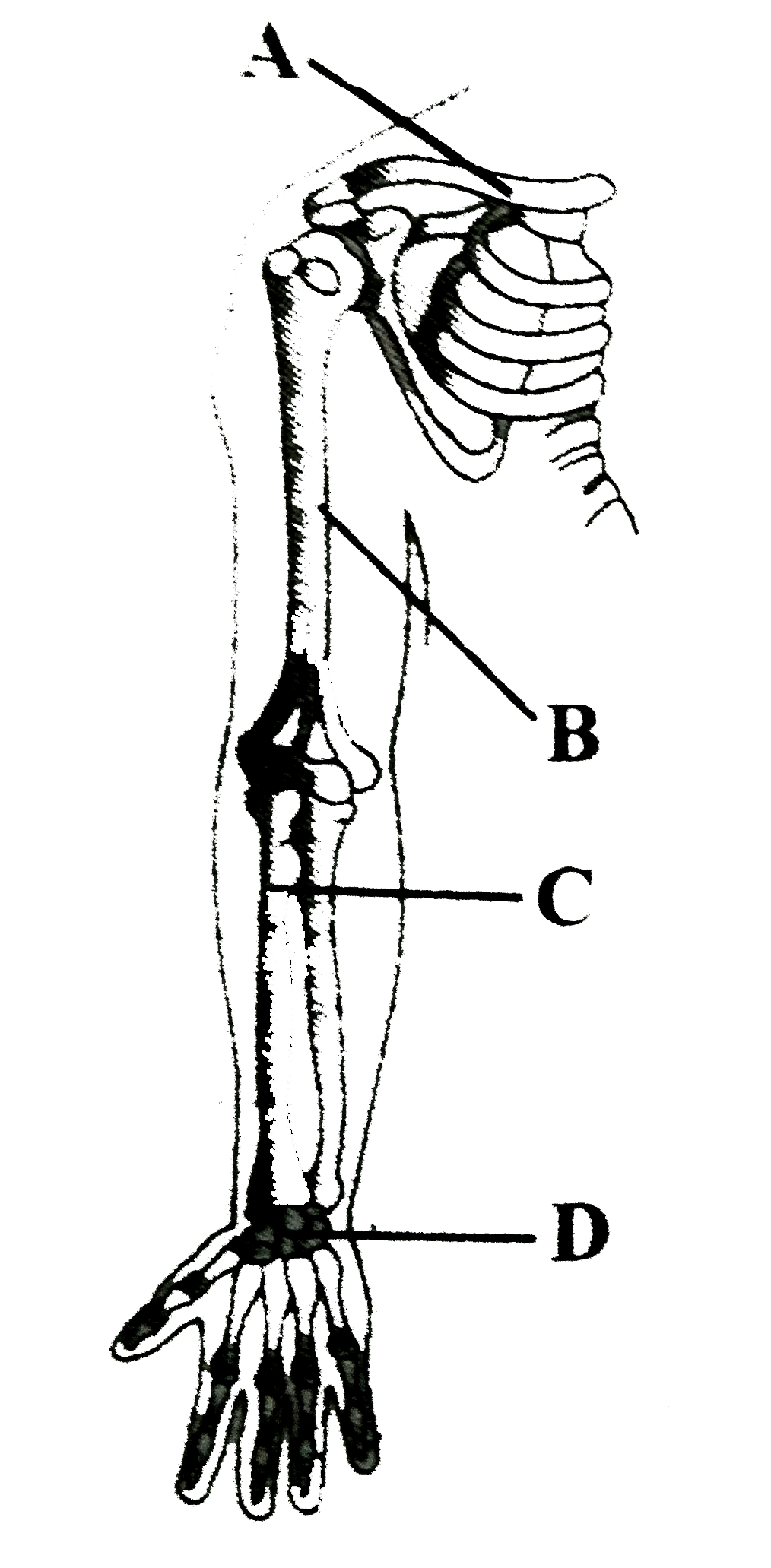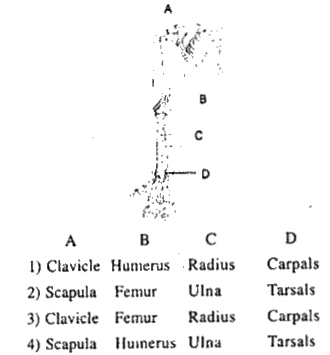Pectoral girdle and pelvic girdle
Step-by-Step Solution:
1. Definition of Pectoral Girdle:
- The pectoral girdle, also known as the shoulder girdle, is a structure that connects the upper limbs to the trunk. It consists of two main bones: the scapula (shoulder blade) and the clavicle (collarbone).
2. Function of Pectoral Girdle:
- The primary function of the pectoral girdle is to stabilize the upper limbs on the thorax (chest area). It allows for a wide range of mobility of the shoulders, enabling various arm movements necessary for activities such as reaching, throwing, and lifting.
3. Definition of Pelvic Girdle:
- The pelvic girdle, or hip girdle, is formed by a pair of hip bones. Each hip bone is made up of three fused bones: the ilium, ischium, and pubis.
4. Function of Pelvic Girdle:
- The pelvic girdle serves to connect the lower limbs to the trunk. It provides stability and support for the body during locomotion and weight-bearing activities. The structure of the pelvic girdle also protects the internal organs located in the pelvic cavity.
5. Comparison of Pectoral and Pelvic Girdles:
- The pectoral girdle is located in the upper part of the body and is involved in the movement of the upper limbs, while the pelvic girdle is situated in the lower part of the trunk and is responsible for supporting the lower limbs. The pectoral girdle allows for greater mobility, whereas the pelvic girdle provides more stability.
- The pectoral girdle, also known as the shoulder girdle, is a structure that connects the upper limbs to the trunk. It consists of two main bones: the scapula (shoulder blade) and the clavicle (collarbone).
- The primary function of the pectoral girdle is to stabilize the upper limbs on the thorax (chest area). It allows for a wide range of mobility of the shoulders, enabling various arm movements necessary for activities such as reaching, throwing, and lifting.
- The pelvic girdle, or hip girdle, is formed by a pair of hip bones. Each hip bone is made up of three fused bones: the ilium, ischium, and pubis.
- The pelvic girdle serves to connect the lower limbs to the trunk. It provides stability and support for the body during locomotion and weight-bearing activities. The structure of the pelvic girdle also protects the internal organs located in the pelvic cavity.
- The pectoral girdle is located in the upper part of the body and is involved in the movement of the upper limbs, while the pelvic girdle is situated in the lower part of the trunk and is responsible for supporting the lower limbs. The pectoral girdle allows for greater mobility, whereas the pelvic girdle provides more stability.
Topper's Solved these Questions
- LOCOMOTION AND MOVEMENTBOOK - ICSECHAPTER - LOCOMOTION AND MOVEMENTEXERCISE - REVIEW QUESTIONS (VERY SHORT ANSWER TYPE QUESTIONS WITH ANSWER)
48 Videos
- LOCOMOTION AND MOVEMENTBOOK - ICSECHAPTER - LOCOMOTION AND MOVEMENTEXERCISE - SHORT ANSWER TYPE QUESTIONS
17 Videos
- LOCOMOTION AND MOVEMENTBOOK - ICSECHAPTER - LOCOMOTION AND MOVEMENTEXERCISE - REVIEW QUESTIONS (WRITE TRUE OR FALSE)
5 Videos
- KINGDOM PROTISTABOOK - ICSECHAPTER - KINGDOM PROTISTAEXERCISE - REVIEW QUESTIONS (VI Long answer type questions)
5 Videos
- LOCOMOTIONA ND MOVEMENT BOOK - ICSECHAPTER - LOCOMOTIONA ND MOVEMENT EXERCISE - NCERT EXERCISES WITH ANSWER (DIFFERENTIATE BETWEEN)
8 Videos
Similar Questions
Knowledge Check
Examine the figure of pectoral girdle and forelimb and identify the parts labelled as A, B, C and D.
 A(A)(B)(C)(D)ClavicleHumerusRadiusCarpalsB(A)(B)(C)(D)ScapulaFemurUlnaTarsalsC(A)(B)(C)(D)ClavicleFemurRadiusCarpalsD(A)(B)(C)(D)ScapulaHumerusUlnaTarsals
A(A)(B)(C)(D)ClavicleHumerusRadiusCarpalsB(A)(B)(C)(D)ScapulaFemurUlnaTarsalsC(A)(B)(C)(D)ClavicleFemurRadiusCarpalsD(A)(B)(C)(D)ScapulaHumerusUlnaTarsals
Coracoid is component of
(a) Fore limb
(b) Skull
(c) pectoral girdle
(d) Pelvic girdle
View SolutionWrite the difference between :
Pectoral and pelvic girdle.
View SolutionAvian pelvic girdle is
View SolutionWhen comparing the pectoral girdle with the pelvic girdle which of the these statements is true?
View SolutionThe pectoral and pelvic girdles and the bones of limb form
View SolutionExamine the figure of pectoral girdle and forelimb and identify the parts labelled as A, B, C and D.

View SolutionThe adult human skeleton consists of 206 bones grouped into axial and appendicular divisions. Which of the following bones belong to the axial or the appendicular skeleton:
skull, clavicle, vertebral column, shoulder girdle, humerus, pelvic girdle, and femur?
View Solution
